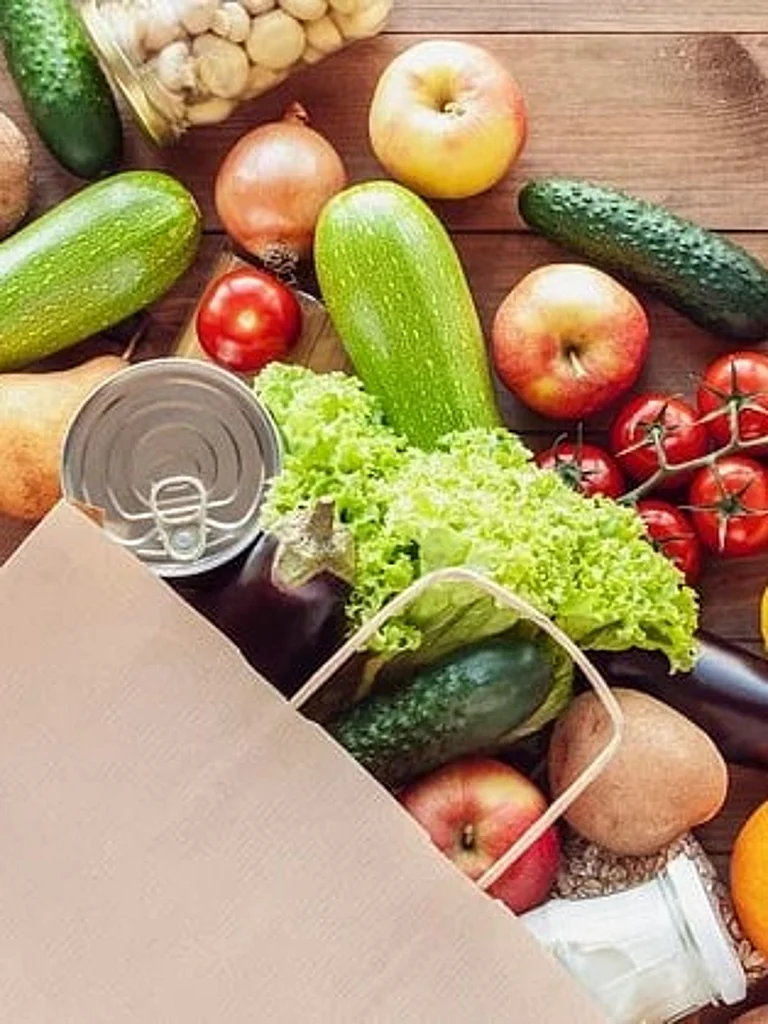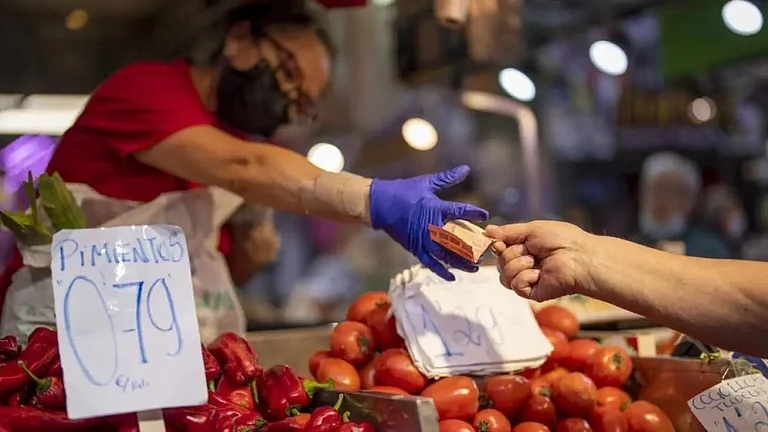Retail inflation fell to 1.55% in July, lowest since 2017.
CFPI recorded -1.76% deflation on steep vegetable and pulses price drop.
Core inflation eased to 4.1%, near RBI’s 4% target.
Economists expect tariffs’ impact muted amid stable global commodity prices.
Retail Inflation Hits 1.55% in July Led by Drop in Food Price, Reaches Lowest Level Since 2017
In July 2025, the rate of inflation in the food and beverages category came in at -0.8%, lower than -0.2% in June and 5.1% in July 2024.
India’s retail inflation slipped to 1.55% in July 2025, hitting the lowest since 2017 and much beneath the Reserve Bank of India’s comfort band of 2-6%. This increase has been driven primarily by a contraction in food prices.
As per the Consumer Price Index (CPI), released by the Ministry of Statistics and Programme Implementation on Tuesday, inflation in the country has been easing for nine consecutive months.
In July 2025, the rate of inflation in the food and beverages category came in at -0.8%, lower than -0.2% in June and 5.1% in July 2024.
CFPI Deflates on Price Drop; CPI Outlook Lowered
According to Sankar Chakraborti, MD & CEO at Acuité Ratings & Research Limited, the Consumer Food Price Index (CFPI) also showed a deflationary reading of -1.76%, down from -1.01% in June, driven by steep price corrections in high-weight items such as vegetables (-20.7%), pulses (-13.8%), and spices (-3.1%). Chakraborti said, “In vegetables, tomatoes fell -34.2%, onions -34.9%, and potatoes -34.3%. Items such as coconut oil (+131.8%), gold (+36%), and silver (+21.9%) recorded steep price increases, fueled by global commodity market pressures and financial trends.”
Additionally, he stated, “We are forecasting headline CPI inflation below 3.0% until December 2025, our FY26 inflation target having been lowered to 3.0% from 3.5%, on the assumption of normal monsoons. This even as we forecast a moderate increase in core inflation to 4.0–4.6%.”
Speaking to The Hindu, Rajani Sinha, Chief Economist at CareEdge Ratings said, “In the food basket, there was deflation in key items such as vegetables, pulses, spices, and meat.” Sinha further stated, “Looking ahead, food inflation is likely to remain contained, supported by healthy agricultural activity and a favourable base.”
Driven by a high base and falling prices, vegetable and pulses prices contracted 21% and 14% respectively.
Core inflation, which excludes the impact of food and fuel prices, also eased to 4.1% in July 2025 from 4.4% in the previous month, nearly at the RBI’s target of 4%.
CPI’s Other Categories Stable, Tariff Impact Limited
In case of the other broad categories in the CPI, inflation remained nearly the same in July as in June. The pan, tobacco and intoxicants category saw inflation remain flat at 2.4% in July. Similarly, the clothing and footwear category saw inflation ease marginally to 2.5% in July from 2.5% in June.
For the housing segment, inflation remained at 3.2% in July, while the same in the fuel and light category dropped from 2.5% in June to 2.7% in July.
Dipanwita Mazumdar, Economist at the Bank of Baroda told The Hindu that a statistical high base will keep the inflation rate down in September-December 2025.
Taking a note of the inflation, Mazumdar said, “The current cycle is acting in favour of us when the inflationary impact from tariffs is the centre point of global discussions.”
Shs added, “We expect the downside risk to global growth will largely keep international commodity prices in check. This is expected to partly negate the higher tariff rates in place.”
However, she also mentioned that India needs to be careful in case it has to completely stop buying Russian oil in accordance with U.S. President Donald Trump’s demands.
“In this case, some diversification towards Kuwait and Iraq would also lend support,” she added.

